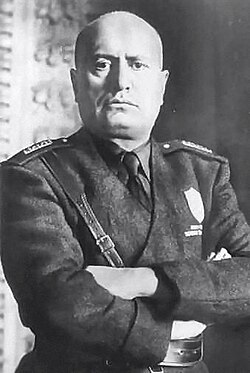| Minister of War | |
|---|---|
| Ministro della guerra | |
 War flag | |
| Ministry of War | |
| Member of | Council of Ministers |
| Seat | Rome |
| Term length | No fixed term |
| Formation | 17 March 1861 |
| First holder | Manfredo Fanti |
| Final holder | Cipriano Facchinetti |
| Abolished | 14 February 1947 |
| Succession | Minister of Defence |
The minister of war of Italy (Italian : ministri della guerra del Regno d'Italia), was the minister responsible for the Ministry of War, which in turn oversaw the Royal Italian Army under the Kingdom of Italy between 1861 and 1946 and the Italian Army under the Italian Republic from 1946 to 1947. The position was abolished in 1947 when the Ministry of War, Ministry of the Navy, and Ministry of Aeronautics were merged to form the Ministry of Defence under the oversight of the new position of Minister of Defence.
Contents
The first minister of war was Manfredo Fanti, a general of the Royal Italian Army, while the last one was Cipriano Facchinetti, a member of the Italian Republican Party. The longest-serving minister was the fascist dictator Prime Minister Benito Mussolini of the National Fascist Party.




















































